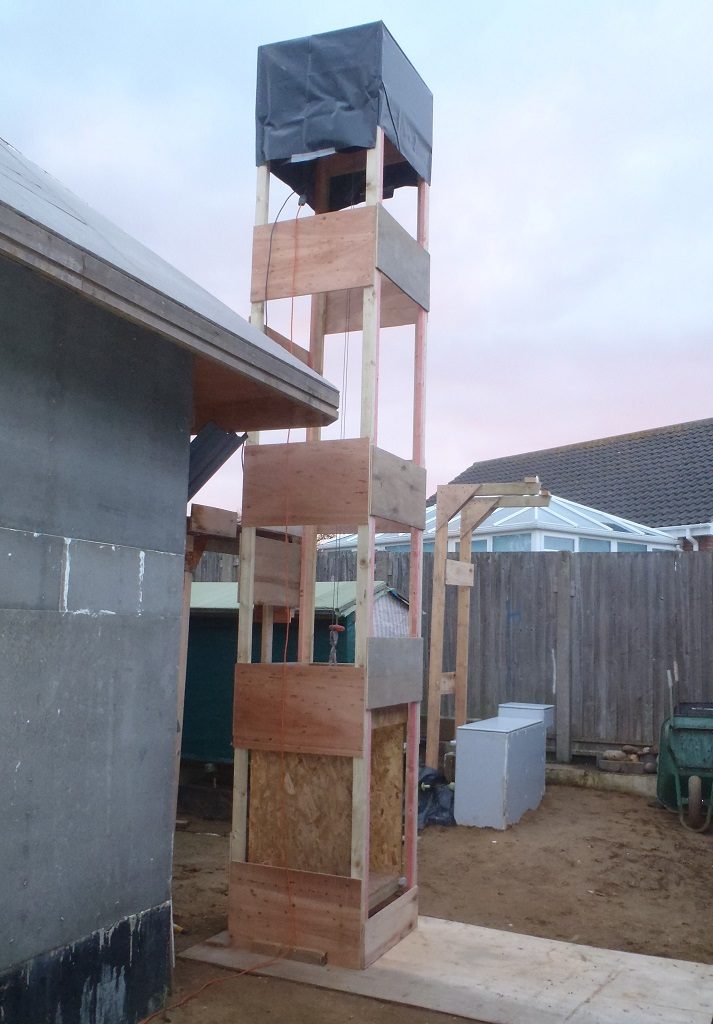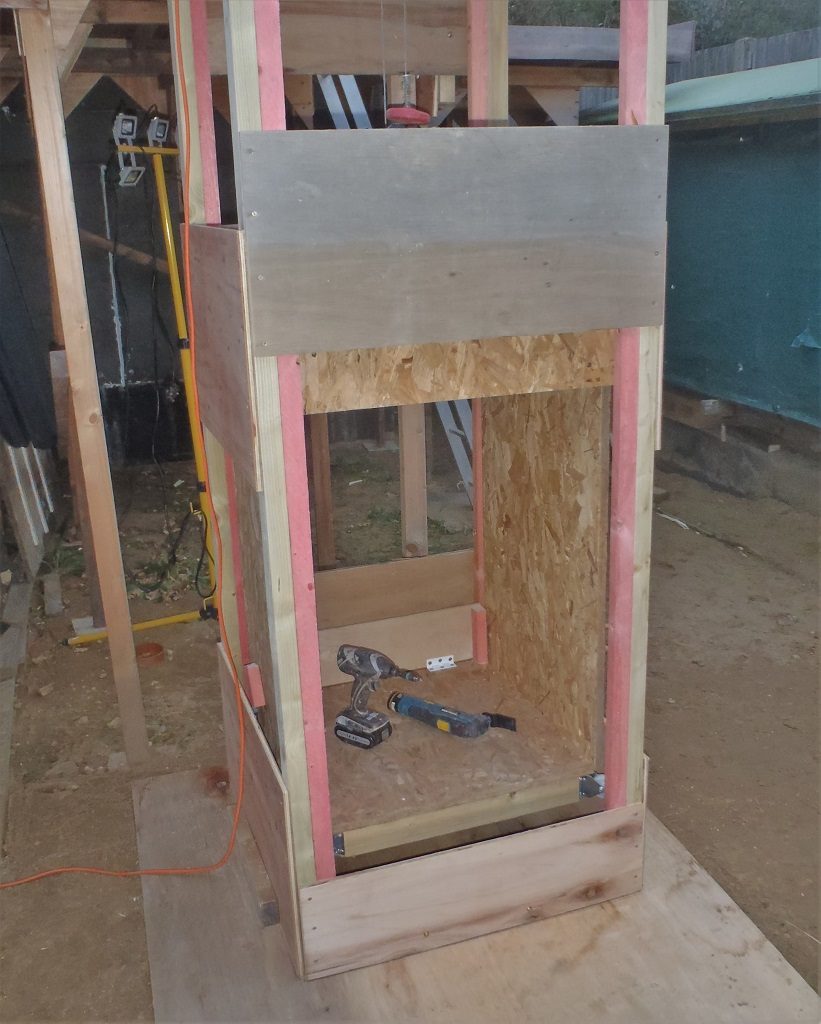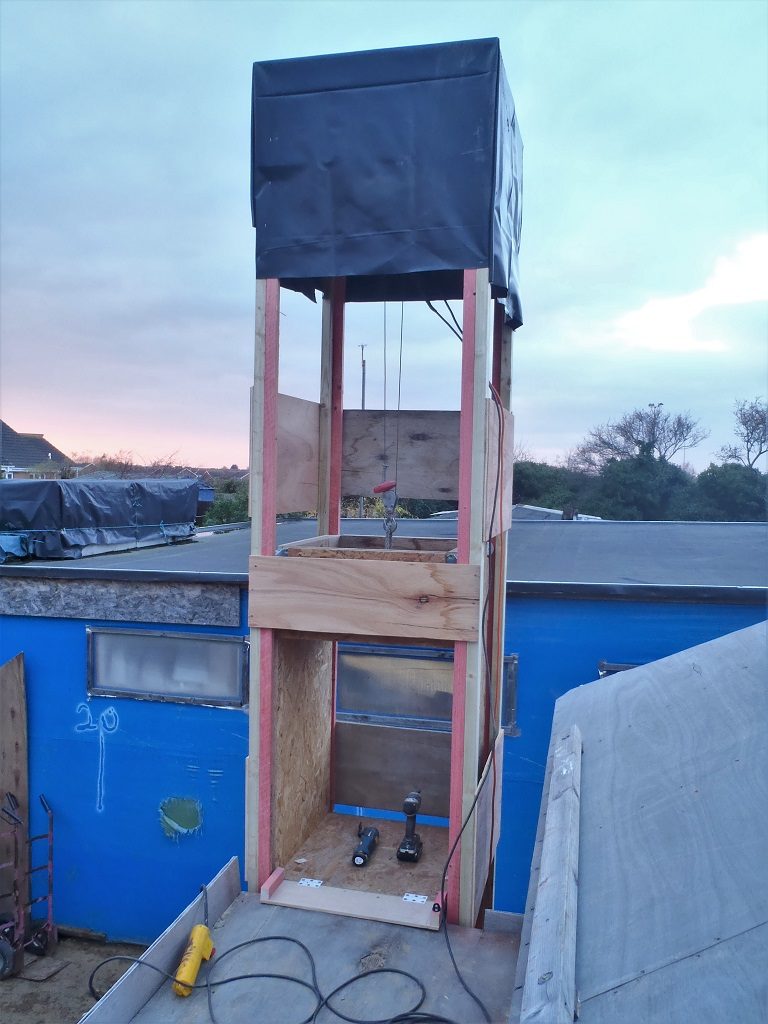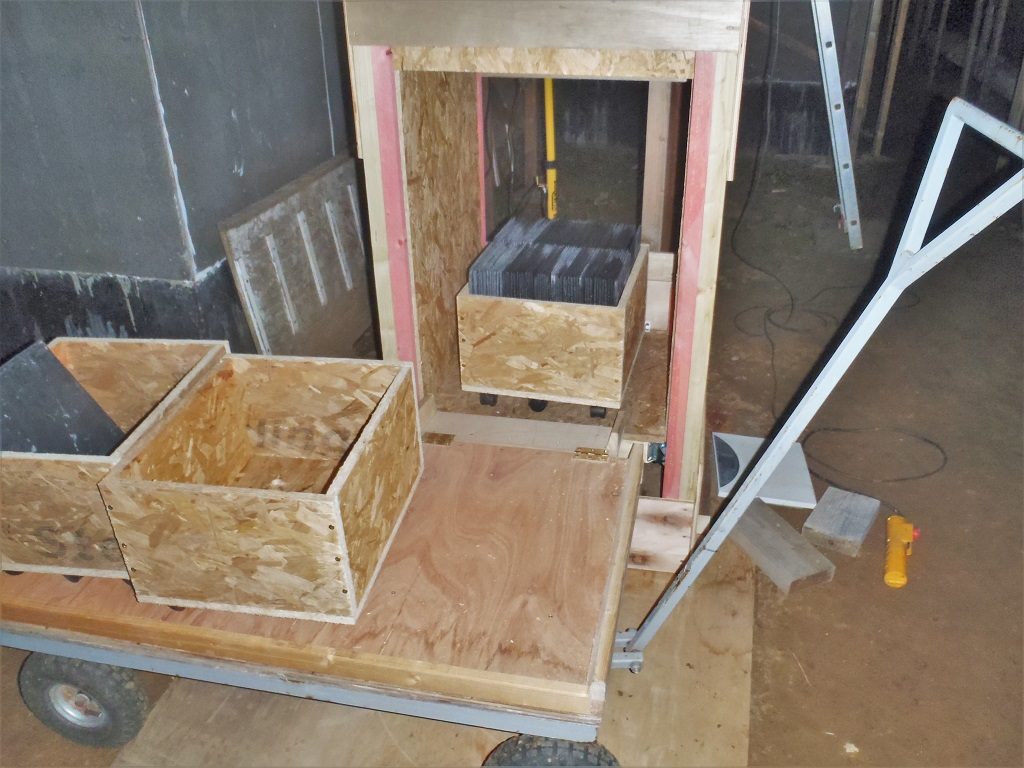Today, we took the opportunity of the fine sunny but cold weather to take our Lift Shaft outside and install it against the walkway platform running around the back of the building. It was positioned against the start of the “I” section of the roof, mounted on a 8feet by 4feet sheet plywood. We also anchored it up at the top of the nearest leg of the platform to ensure that it won’t get blown over in high winds or topple with heavy loads inside it.
We had to slide the cargo cage up inside the Lift Shaft while it was lying on its back, entering from the bottom. Then push the whole thing upright by lifting at the other end (the top end) and slowly walk it gradually upright. It was also anchored at the bottom to the plywood base sheet too.
We then hooked up the hoist motor at the top of the shaft using a metal pole and unwound the cable down to the cage. The final job was to mount on a second ramp on the other side of the cage, the side facing the platform walkway so we can trundle our dolly trolleys off. We tested the capabilities of the whole system by first loading several heavy concrete blocks into the cargo cage (about 75kg of load) and ran it up and down several times.
Then we went to our slate storage area and loaded up one of our dolly trolleys full of slate tiles, we managed to put in two rows of 60 slates. We took that back again using our modified flat-bed trolley and loaded it into the cage. We weighed this and the cage on a bathroom scales and it came to just short of 150kg and the cage being about 40kg itself which leaves about 110kg for the box of slates. This latest load test was handled just fine!
That is the basic lifting system all done, mechanically speaking at least, but we have ordered some electrical switches, push buttons, limit switches (to detect the position of the cargo cage) and relays plus a micro-controller (tiny computer) chip to join all these pieces with some logic to achieve a much better system of having the ability to push a button to send it up and automatically stopping at the top, and do the same with another button at the top to send it down again. It will have other safety features like the ramp must be folded up and secured before the lift can start moving.



